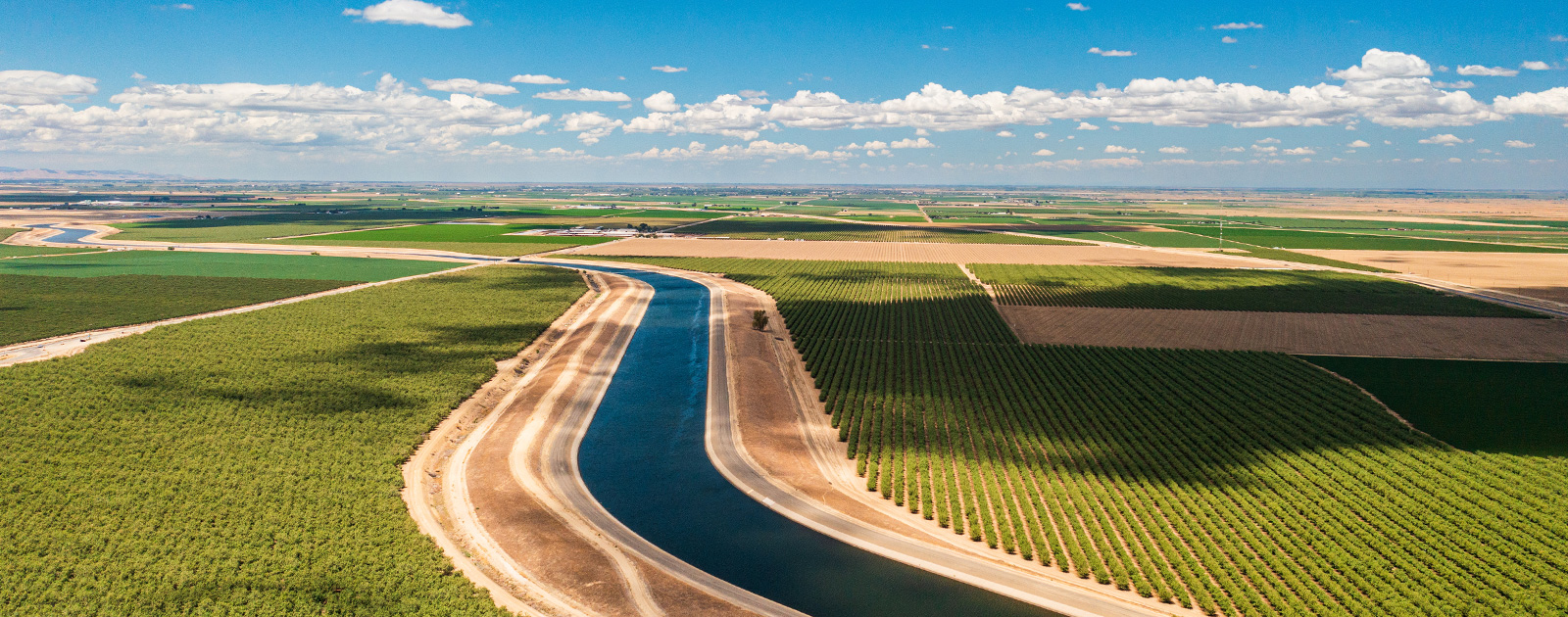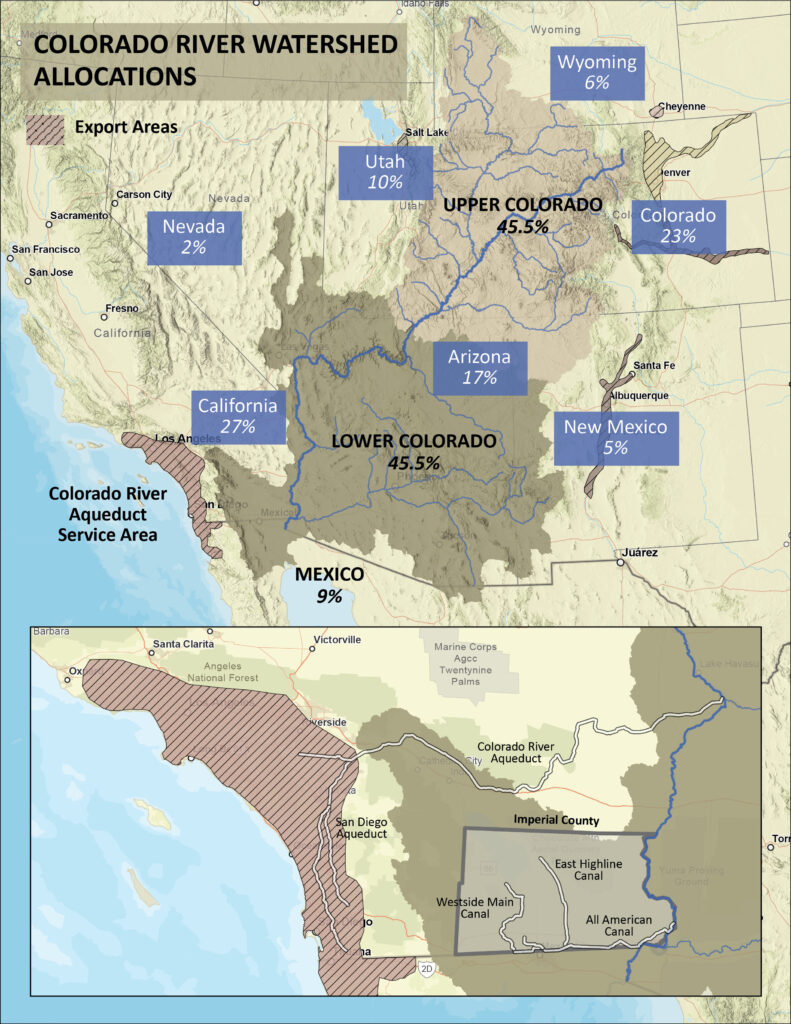Despite this season’s welcome winter rains the Western United States remains in a nearly quarter-decade “megadrought.” This long drought period manifests in the Colorado River’s diminished flow. Southern California relies on this vital resource. In fact, California uses the single largest share of the river. And Imperial Valley farms are allocated nearly 80% of that share. Here in the Coachella Valley imported Colorado River water replenishes our aquifer. But the federal government has told the seven states reliant on the river flow to reduce their water supply by 30%, roughly equal to California’s allotment.
Today’s map displays the watershed of the Colorado River and reliant sections of Southern California. The Colorado River Aqueduct, administered by the Metropolitan Water District, runs through the northern stretches of our valley supplying drinking water for much of the populated areas of Riverside and San Diego counties. The All American Canal provides water for the fertile farming areas of the Imperial Valley. Astonishingly, nearly two-thirds of vegetables eaten by Americans during the winter come from the Imperial Valley.
Obviously, Colorado River allotments to Southern California cannot be severally restricted due to the national reliance on the bounty of this region. But restrictions will occur. The Coachella Valley has a strong history of agriculture thanks to the sediments of the ancient Lake Cahuilla. Agriculture remains an important component of our local economy. The Colorado River crisis could be a great opportunity for our valley to become a leader in desert agriculture innovation and leadership. For inspiration, Israel, with a similar dry Mediterranean climate, is a pioneer in farming using little water. CVEP is here to support and bolster that sort of ingenuity for the Coachella Valley.









